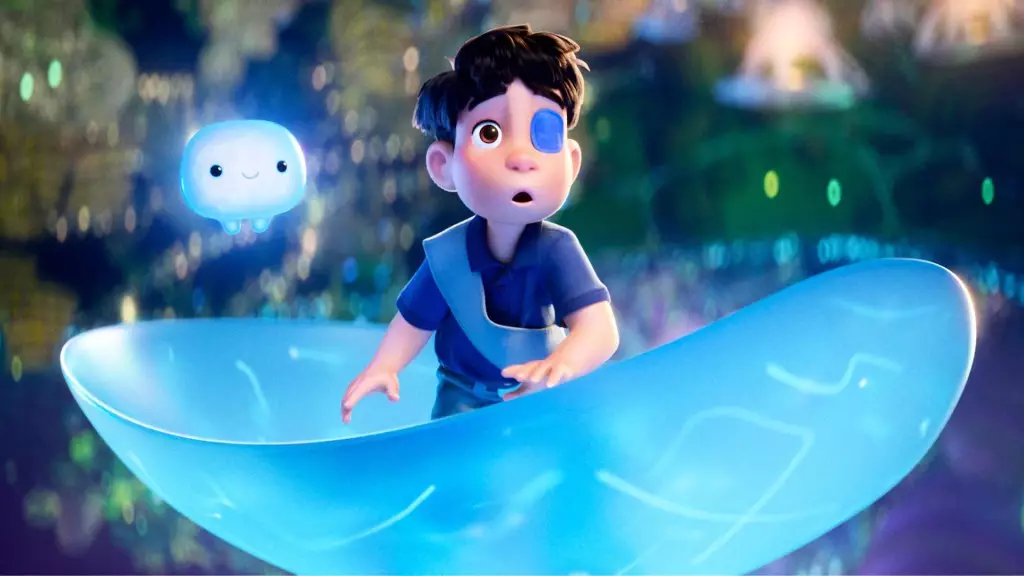Elio’s disheartening box office debut has sparked conversations that extend far beyond the realms of animation. Registering the lowest opening gross of any Pixar film at a mere $21 million, this outcome raises serious questions about the health and trajectory of the animated film industry. Despite being critically embraced with an 84% Rotten Tomatoes score, Elio epitomizes the complexities and challenges that original content faces in a market saturated with sequels and established franchises. Critics and analysts are concerned that this trend symbolizes a deeper malaise within the animated film sector, particularly in the wake of the pandemic that has altered viewing habits irreversibly.
Doug Creutz, a cogent voice from TD Cowan, highlights a profound divide between original animated films and their sequel counterparts. This gap, he emphasizes, has grown increasingly wide as audiences gravitate toward familiar stories rather than fresh narratives. This shift underscores a burgeoning risk for studios: in a race to secure profitability, the focus may increasingly drift away from innovation, suffocating the potential for new intellectual properties. Creutz’s statement that studios may curtail investment in original animation due to audience preferences prompts a vital inquiry—are audiences merely consumers stifling creativity, or should studios share some responsibility for the stagnation of original storytelling?
Implications for Disney and the Broader Market
Disney’s decision to push Elio’s release from 2024 to 2025 further compounds these concerns regarding audience appetite and intellectual property. Such a strategic retreat signals caution at the highest levels of the company, especially under CEO Bob Iger, who is already grappling with internal challenges, including a proxy fight. The decision seems prudent amidst fears that a failure in animation could reverberate through Disney’s theme parks and other auxiliary revenue streams, which are heavily reliant on new intellectual properties for their appeal.
Notably, this phenomenon isn’t confined to Disney alone. The cold hard numbers reveal a stark contrast between the performance of original titles and sequels. Creutz has astutely observed that since 2022, the average gross for original animated features from both Disney and Universal rests at $412 million, significantly lagging behind the average of $844 million garnered by sequels. This statistic does not merely depict a trend—it dictates the strategic trajectory for studios grappling with profit margins.
What’s particularly alarming is the prospect of a new norm, where creativity and originality become sidelined in favor of cashing in on nostalgia. Major franchises like Inside Out 2 and Moana 2 certainly indicate a reliable route for financial success, yet they do little to pave the way for groundbreaking experiences within Disney’s theme parks. The precarious position in which Disney now finds itself reveals the fragile balance between melding art with commerce. The robust $34 billion in annual parks revenue masks an unsettling truth—without innovation, the vibrancy that once fueled Disney’s growth could diminish, leading to a desert of creativity.
Why This Trend Cannot Continue
The crux of the issue lies not only in the studios but in the audience and their evolving expectations. Have consumers become passive receptors of content, resigning themselves to the safety of sequels? If so, this poses a grave threat to the lifestyle of cultural enrichment that original films promote. While it’s tempting to cast blame solely on the audience for this trend, studios must ignite the spark that captivates viewers and encourages them to invest in new intellectual properties.
Turning the tide is crucial not just for corporate interests but for the broader cultural landscape. The potential ramifications of a homogeneous animated film market could mirror other art forms; imagine a world where creativity becomes an afterthought. In essence, studios must reclaim their creative courage and move towards a balance between profitability and innovation. It’s an uphill battle, but one that industry leaders must fight vigorously or risk falling into a chasm of mediocrity. The real artistic challenge will be to dismantle the barriers that keep audiences from seeking out new narratives that provoke thought, elicit emotions, and ultimately captivate their hearts.

